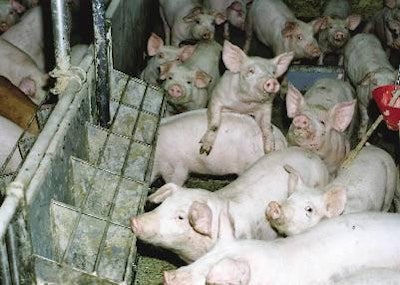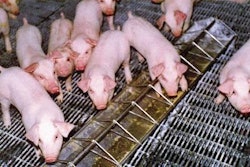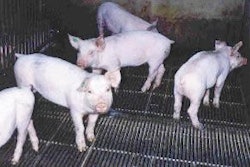
World pig numbers are believed to have increased each year since 2000, with 2005 inventory data indicating a return to previous annual rates of growth after virtual stagnation in 2004.
On the figures quoted by FAO, the total of 960.3 million pigs on farms worldwide in 2005 compared with 945.1 million the year before. This therefore signified an increase of 1.6%.
From a starting level of 896.4 million in 2000 the global inventory had been shown rising by 1.9% in 2001, by another 1.7% in 2002 and by a further 1.4% in 2003 before growing by only 0.4% in the year 2004.
Meanwhile, the statistics on inventory and production provide evidence to support the view that the world's pig industries are becoming increasingly efficient. The 1.6% in global pig numbers estimated for 2005 compares with an assessment from the same source (United Nations agency FAO) that global pigmeat output rose by 3.25% last year to reach almost 104 million metric tons.
The agency has pointed to the increased efficiency of rapidly growing commercial operations in China and to the effects of industry concentration on the productivity of units in North America and the European Union.
See Table 1 for the patterns of annual inventory since 2000 in each of the 10 countries we regard as the largest for pig numbers. China always tops the list by a long way, of course. In 2000 it was reckoned to account for 49.8% of the world on-farm total for number of pigs. Although its share stayed at 49.5% in 2003, in 2005 it grew to 50.2%. Indeed, Table 1 suggests that China last year held twice as many pigs as all the other 9 of the Top 10 countries combined.
Our own database also keeps track of sow numbers in the world's main pig-producing countries, on the basis of national statistics where available and otherwise on local estimates. In Table 2 we present our view of the 10 countries with the most sows in 2005. Their figures for previous years are included for comparison. As with the production data for 2005, these indicators of breeding herd size demonstrate the emergence of Vietnam as one of the big players on the global pork scene. In Europe, Spain has kept its place ahead of Germany in terms of sow count.
Generally, however, sow numbers have started to stabilise in most parts of the world reflecting both the greater output efficiency mentioned before and the transfer of the dominant share of production to larger enterprises, even in those countries where backyard units have held many sows until now.
















